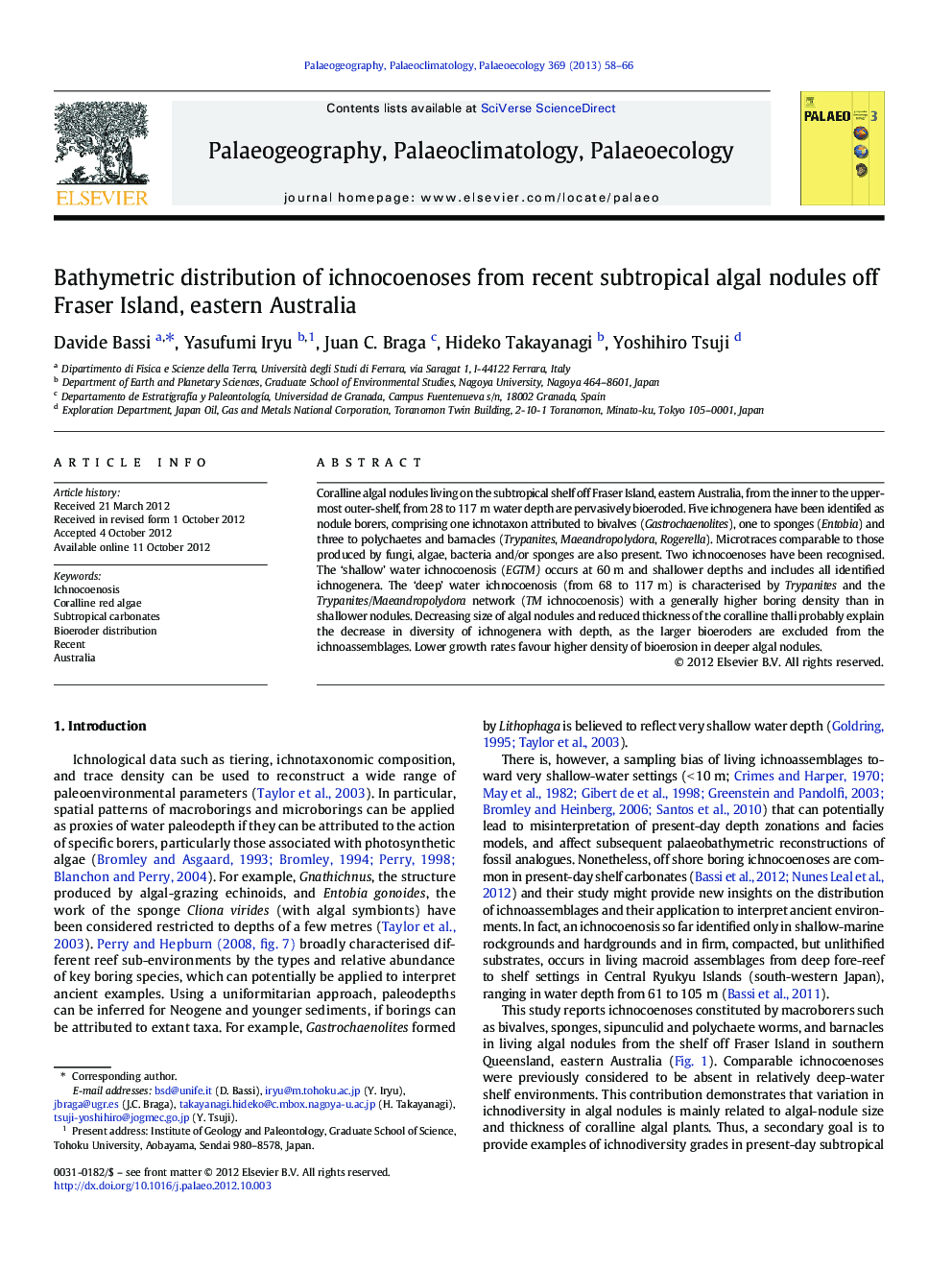| Article ID | Journal | Published Year | Pages | File Type |
|---|---|---|---|---|
| 4466683 | Palaeogeography, Palaeoclimatology, Palaeoecology | 2013 | 9 Pages |
Coralline algal nodules living on the subtropical shelf off Fraser Island, eastern Australia, from the inner to the uppermost outer-shelf, from 28 to 117 m water depth are pervasively bioeroded. Five ichnogenera have been identifed as nodule borers, comprising one ichnotaxon attributed to bivalves (Gastrochaenolites), one to sponges (Entobia) and three to polychaetes and barnacles (Trypanites, Maeandropolydora, Rogerella). Microtraces comparable to those produced by fungi, algae, bacteria and/or sponges are also present. Two ichnocoenoses have been recognised. The ‘shallow’ water ichnocoenosis (EGTM) occurs at 60 m and shallower depths and includes all identified ichnogenera. The ‘deep’ water ichnocoenosis (from 68 to 117 m) is characterised by Trypanites and the Trypanites/Maeandropolydora network (TM ichnocoenosis) with a generally higher boring density than in shallower nodules. Decreasing size of algal nodules and reduced thickness of the coralline thalli probably explain the decrease in diversity of ichnogenera with depth, as the larger bioeroders are excluded from the ichnoassemblages. Lower growth rates favour higher density of bioerosion in deeper algal nodules.
► Subtropical algal nodules off Fraser Island are pervasively bioeroded. ► Five ichnogenera have been identified as coralline algal nodule borers. ► Shallow water ichnocenosis occurs down to 60 m and a deep water one from 68 to 117 m. ► Decreasing ichnodiversity with depth shows relationship with algal nodule characters. ► Lower coralline growth rates favour higher bioerosion density in deeper algal nodules.
